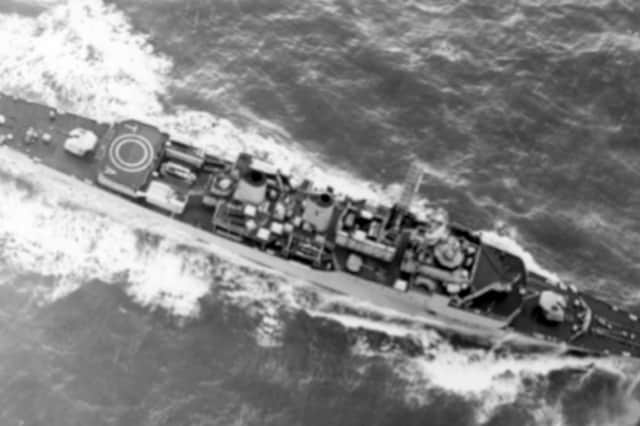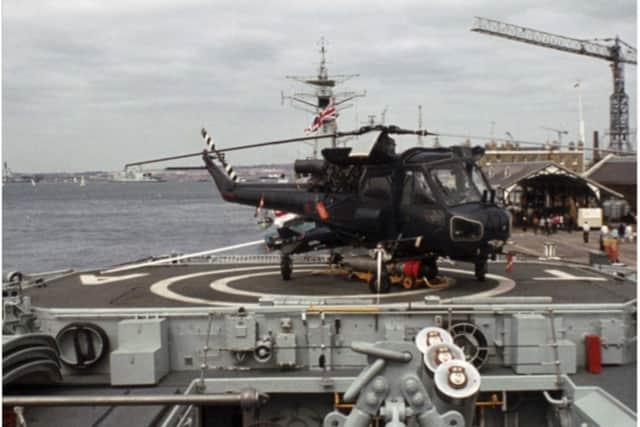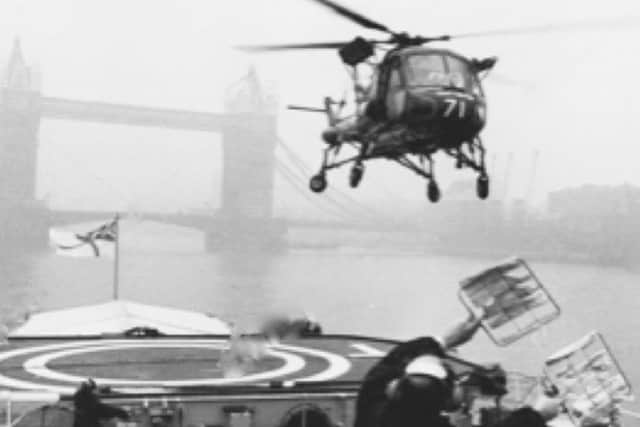Royal Navy flyers land on pitching postage stamp deck | Nostalgia


My primary job on HMS Tartar (1976-1978) was the maintenance of internal communication systems.
This included the helicopter Telebriefing system, which plugged into the helicopter on the flight deck and allowed direct communication between the FDO and pilot.
Advertisement
Hide AdAdvertisement
Hide AdWorking on HMS Queen Elizabeth while in build at Rosyth Dockyard was awe-inspiring, the size and complexity of the behemoth always impressed.


The flight deck, with space for three football pitches, gives the pilots of F-35 Lightning jets and helicopters a vast platform to operate from.
The size of modern RN flight decks are thought-provoking. Their technological advances with communications and landing equipment are a quantum leap from early helicopter operations at sea.
Designed during the 1950s, the Tribal Class frigates were the first RN class to be designed to operate a helicopter.
Advertisement
Hide AdAdvertisement
Hide AdThe postage stamp-sized flight deck/hangar was sandwiched between the after 4.5in Mark 5 gun and the Anti-Submarine Warfare (ASW) Limbo Mortar Mark 10, and presented the pilot with a challenging deck landing.


The Westland Wasp helicopter was a small 1960s British turbine-powered, anti-submarine helicopter. It fulfilled the RN requirement for a helicopter small enough to land on frigates, carrying two homing torpedoes. It was crewed by a pilot and a missile aimer.
It had a unique four-wheeled undercarriage that allowed the aircraft to be manoeuvred on small, pitching flight decks.
The Wasp achieved negative pitch from the rotor-blades which enabled it to adhere to the deck until the lashings were attached. The tail boom and main rotor blades were foldable to allow stowage in the hangar below the flight deck.
Advertisement
Hide AdAdvertisement
Hide AdThe increasing speed and attack range of the submarine threat, and the increased range at which this threat could be detected, led to a RN requirement for a Manned Torpedo Carrying Helicopter (MATCH).
Contemporary shipboard weapons did not have the necessary range; therefore MATCH was in essence a stand-off weapon with the helicopter carrying the torpedo or other weapon to the target and being instructed where to launch.
The Wasp carried no SONAR and worked in partnership with its parent ship or other ASW units. On Tribals, SONAR Type 177 (maximum 20,000 yards) was used for target range and bearing information.’
Comment Guidelines
National World encourages reader discussion on our stories. User feedback, insights and back-and-forth exchanges add a rich layer of context to reporting. Please review our Community Guidelines before commenting.